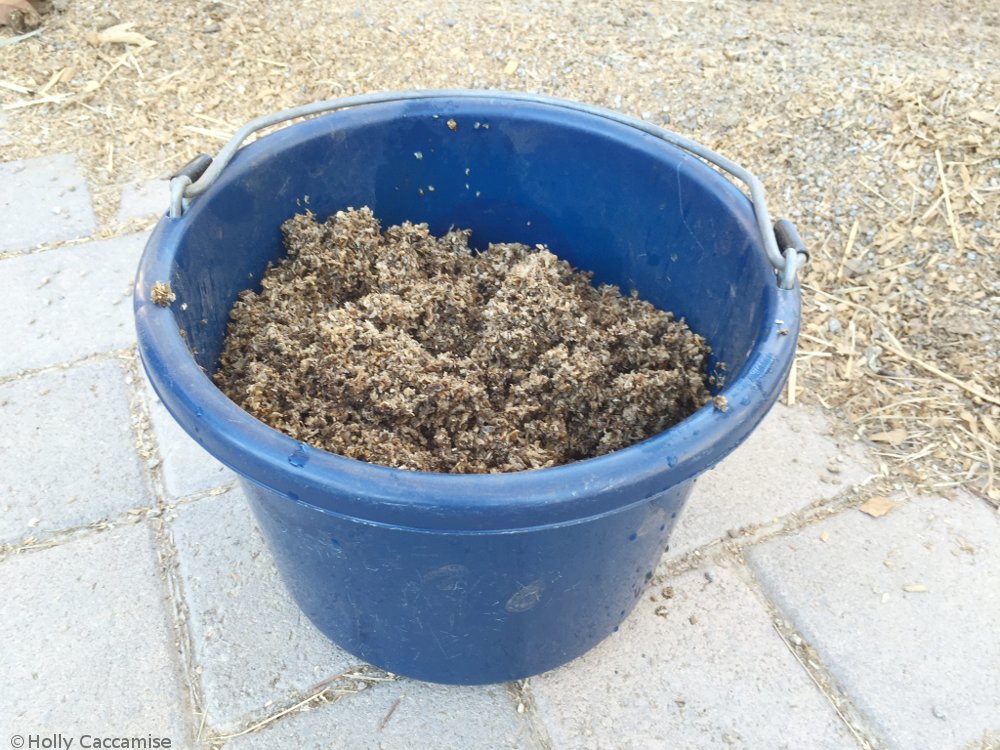Generally considered a safe high-fiber feed, beet pulp has been fed to horses for years. But is it right for your horse? Forget pulp fiction. Talk to your vet and get the facts here so you can make an informed decision on whether to add beet pulp to the menu.
Beet Pulp Basics

As its name suggests, beet pulp comes from sugar beets (the same root crop that provides “sweetness” to lots of our favorite edibles such as candy, syrups and cereal). Pulp is the high-fiber material that remains after sugars are extracted from the beets—from there the “mush” is squeezed, dried and formed into pellets or shreds. Bagged and shipped, it’s available nationwide at a feed store near you. As part of a complete feed, beet pulp can be a little pricey—but served plain alongside hay or pasture, it’s a cheap side dish.
Who Gets Beet Pulp?
A horse’s age, breed and performance level all influence his nutritional needs. Beet pulp is generally considered safe for most horses, but it isn’t necessarily a substitute for good quality forage unless your horse has dietary restrictions.
“I believe that feeding horses long-stem hay, when they can handle it, is a more natural feed,” says Tina Kemper, DVM, Diplomate ACVIM, of San Luis Rey Equine Hospital in Bonsall, Calif.
But some of the nutritional benefits of beet pulp are comparable to many types of forage. For example, the fiber content of beet pulp is in line with most hays, and the protein content is similar to good quality grass hay (7 to 8 percent). Like alfalfa hay, beet pulp is relatively high in calcium and very low in phosphorus (about 6:1)—an important consideration when meal planning.
“Beet pulp has a higher calcium content than grass hay, so I wouldn’t recommend it for a horse that has a tendency to make kidney or bladder stones, accumulates calcium carbonate sludge in the bladder or has kidney disease,” advises Dr. Kemper.
For horses that need to pack on a few pounds many owners turn to beet pulp, but it shouldn’t completely replace good quality hay. Even when good forage is in short demand, Dr. Frederick Harper, extension horse specialist at the University of Tennessee’s Animal Science Department, reports in his Horse Information Series that “beet pulp can replace about 25 percent of the hay fed on a pound-per-pound basis.”
Dr. Kemper says, “Beet pulp can be used for weight gain, but it wouldn’t necessarily be my first choice. It is quite a bit lower in fat than many of the grains, such as oats, and also a little lower in digestible energy. I believe that many of the complete feeds are a wiser choice, as the commercial feed companies have put quite a bit of effort into making sure that these feeds are nutritionally balanced.”
Dr. Kemper concedes that she occasionally recommends beet pulp for horses that need to fatten up but get too “hot” on grain products.
Valid debates continue for and against feeding beet pulp as part of a management program for horses that have recurrent bouts of tying up, clinically referred to as “recurrent exertional rhabdomyolysis” or RER. More recent studies have shown that other diseases associated with RER, such as polysaccharide storage myopathy, can also be managed by a diet that includes beet pulp.
Debates aside, a majority of veterinarians agree that horses suffering from these diseases should be on diets somewhat higher in fat, but low in digestible energy and starch. Even though beet pulp is lower in digestible energy than most grains, it’s higher than most hays, including alfalfa. It’s definitely low-starch fare, but high in fat it isn’t. “I would not recommend the use of beet pulp for horses that tie up,” warns Dr. Kemper. Instead, she recommends grass hays, along with commercial feeds specially formulated for these horses.
Still, some studies have pointed out that diets with beet pulp benefit horses that chronically tie up, because the low sugar/low starch makeup helps keep blood glucose responses low. In a study published in January 2003 that was conducted by Anne Rodiek, Department of Animal Sciences and Agricultural Education, California State University, Fresno, beet pulp elicited the lowest blood glucose response (blood sugar produced after eating) over all other feeds that were tested. Other diseases, such as laminitis, mandate a low starch/low sugar diet: Grass hays, along with beet pulp, are often on the grocery list for these horses too.
Older horses with dental problems can benefit from soaked beet pulp, says Dr. Kemper, although she advises that some of the senior feeds on the market are a more balanced source of nutrition. For horses that inhale their senior feed, Dr. Kemper says that the addition of some soaked beet pulp can help slow down an enthusiastic eater.
But as foals go, beet pulp is not optimal because of the calcium to phosphorus ratio. “Beet pulp use in foals is a little tricky. I generally don’t recommend it as it is easy to create an imbalance when formulating diets for fast growing foals,” Dr. Kemper says.
Respiratory problems in horses, such as chronic obstructive pulmonary disease (COPD), are complicated by dusty feeds, so beet pulp is often added alongside pre-soaked hay and/or pelleted feed. When soaked, beet pulp is a dust-free alternative.
Urban Legend
Many supplemental and complete feeds are fed dry—and include beet pulp as a main ingredient. The hazards of feeding unsoaked beet pulp are exaggerated, but some horse owners don’t want to take any chances.
“I always recommend soaking it to try and minimize the risk of choke and gastric impactions, although I personally have never had the misfortune of having to treat one of these conditions caused by beet pulp,” Dr. Kemper says. “But all it takes is one greedy eater—the way beet pulp pellets tend to expand could make for a particularly difficult choke to resolve. It certainly doesn’t hurt to soak it, so why not take the opportunity to get more water into the horse?”
Make Changes For the Better
Non-traditional feeds, like beet pulp, can provide benefits for some horses when safe feeding management is practiced. As recommended by your veterinarian, make any feed change (amount, type and schedule) slowly. And look for warning signs that could be telling you what you’re serving up for dinner doesn’t agree with your horse.
Further Reading
Meeting Your Horse’s Nutritional Needs
Seven Feeding Myths Shattered
This article originally appeared in the April 2004 issue of Horse Illustrated. Click here to subscribe.






Very good article! I have a cushings positive horse that by definition is also I/R. That lead to laminitis and resulting founder…so I had to make some drastic changes in her diet and farrier trims. I switched her over to soaked beet pulp, added in 12:12 chelated minerals and horseshoers secret and her meds needed. Of course, grass hay, salt block and water are always available. Now after a year and 3 blood tests…she’s staying on the good side of the nubmers and is maintaining on this diet. Just like everything, Beet Pulp has it’s place in certain horses diets…
Dr.Kamer, like so many other vets, is a good example of why vets shouldn’t be in charge of your feed program. Having fed beet pulp for 5 years now to my racehorses (of all ages ),I can tell you it is the best feed for healthy and problem horses. I stated feeding it when I got a yearling filly that tied up when walking on the end of a shank.After two weeks, she was able to be trained, and went on to make over $400,000 as a two year old. Another filly was purchased as a broodmare prospect because she tied up so bad she couldn’t train. After switching her to beet pulp, she trained well, and ran. It is also great for chronic colic horses. The key to feeding beet pulp to performance horses is adding sufficant fat in the form of soybean oil and rice bran oil, as well as extra protien (soybean meal), minerals (I recommend Vita-horse), and electrolytes. A very small amount of a grain based feed (handful) may be added to make it taste better.
would feeding 1 c. of beet pulp soaked daily increase my horse’s energy? I feed him 2 c. low energy grain a day along with 1c soaked beet pulp. He has so much energy on the trail anymore that riding him when he is prancing is not FUN for this senior lady. He is on pasture 9 hrs a day and in a paddock at night.
I as well have been feeding beet pulp for well over 8 years and have never found the results I get with any other feed. Rescuing old retired TB and warmbloods that are literally walking skeletons, Beet pulp is the only feed that got the weight back on in amazing amounts of time. I have never had a horses tie up or colic on it as well.
your article was very edgecational. I was told that beet pulp was good for keeping my horses sanded is this true??